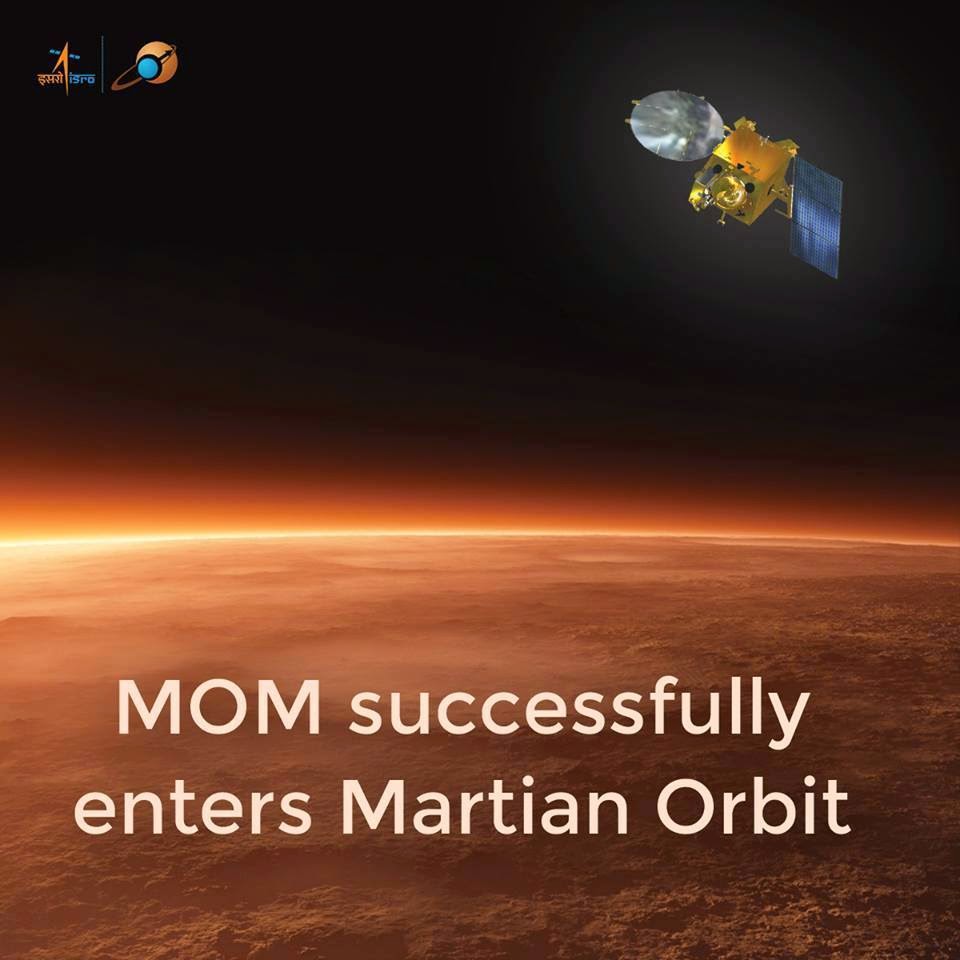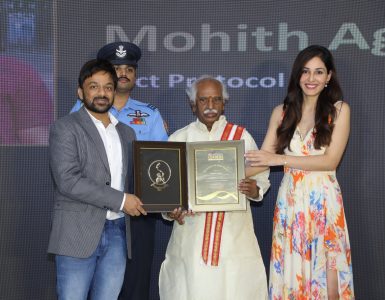MOM: Mars Orbiter Mission, India’s first mission to the Mars, the Red Planet. India successfully launched the satellite into Mars Orbit: India bags the record as the first Asian country to reach the Mars, the red planet. Space Scientists at mission control in Bangalore, India’s tech capital in presence of India’s Prime Minister Narendra Modi announced that satellite Mars craft successfully entered Mars Orbit covering a voyage of 10 months from the Earth.
Going deeper into the historical & triumphing moment of MOM: Mars Orbital Insertion took place on September 23 at 9:47:32 p.m. EDT & September 24 at 07:17:32 hrs IST went on action live via a live webcast from the ISRO, Indian Space Research Organization website. And here are live streaming details that went on air as the pridest moment of Indian space history of ISRO being unveiled to the world: ISRO’s live streaming webcast started on the US East Coast on Sept. 23, at 9:15 p.m. EDT and in India on Sept. 24 at 6:45 IST: http://www.isro.org
MOM has concluded its 10 months interplanetary voyage of nearly 442 million miles (712 million km) from Earth to reach Mars, the red planet. On Monday, September 22, engineers at the Bangalore mission control center verified the performance & readiness of the LAM by conducting the final Trajectory Correction Maneuver with a engine burst duration of 3.968 seconds. Then the announcement: “We had a perfect burn for four seconds as programmed. MOM will now go-ahead with the nominal plan for Mars Orbital Insertion,” said ISRO. And with all Good Luck Wishes for MOM from around the world: NASA, JPL & DSN.
“We wish a successful MOI for MOM,” said Bruce Jakosky, MAVEN principal investigator with the Laboratory for Atmospheric and Space Physics at the University of Colorado, Boulder (CU/LASP) at MAVEN’s post MOI briefing on Monday, Sept. 22.
The MOI, Mars Orbital Insertion burn includes firing the probes 440 Newton Liquid Apogee Motor (LAM) & eight smaller 22 Newton liquid fueled engines for a duration of about 24 minutes to enter Mars orbit. And the confirmation of successful start to the engine burn received back on Earth at about 10 p.m. EDT or 7:30 IST. And confirmation of successful MOI received at about 10:30 p.m. EDT or 8:00 IST. And everything went well & MOM joined Earth’s newly fortified armada of six spacecrafts operating on Mars surface or in orbit: MAVEN, Mars Odyssey (MO), Mars Reconnaissance Orbiter (MRO), Mars Express (MEX), and Curiosity & Opportunity. Mars craft costs about $74 million to send it into the space which makes the cheapest of all the missions planned to Mars, the red planet. On similar lines U.S. spent $671 million to get its Maven satellite to Mars orbit on late Sunday.
Mr. Modi boasted that India had spent less than Hollywood had on producing the film “Gravity” to reach the red planet. On Wednesday, Mr. Modi, wearing a bright red jacket, hugged Koppillil Radhakrishnan chairman of the Indian Space Research Organization, before addressing ISRO scientists in Hindi and English. “History has been created today, we have dared to reach out into the unknown and have achieved the near impossible,” Mr. Modi said. ”I congratulate all ISRO scientists as well as all my fellow Indians on this historic occasion.”
“We have gone beyond the boundaries of human enterprise and imagination. We have navigated our spacecraft through a route known to very few,” the prime minister added.
Successfully launching a satellite or spaceship into Mars Orbit is not an easy task. As mostly half the World’s previous attempts have failed. Out of 41 missions 23 failed, including Japan’s attempt in 1999. The United States achieved its first success in 1964 with flyby by a spacecraft called Mariner 4 that returned 21 images of the surface of the planet. And the former Soviet Union reached the planet in 1971 & the European Space Agency in 2003.
India’s 1,350 kilogram (3,000 pound) orbiter circles the planet for about 6 months collecting scientific data. MOM, Mars Orbiter Mission goal is to study Mars surface features, morphology, mineralogy & the Martian atmosphere with five indigenous solar powered scientific instruments. And also MOM has another goal of sniffing or detects methane, a key chemical in life processes on Earth which also formed from geological processes. Experts are optimistically views that these data helps to understand about the formation of planets & the conditions that create life possible.































